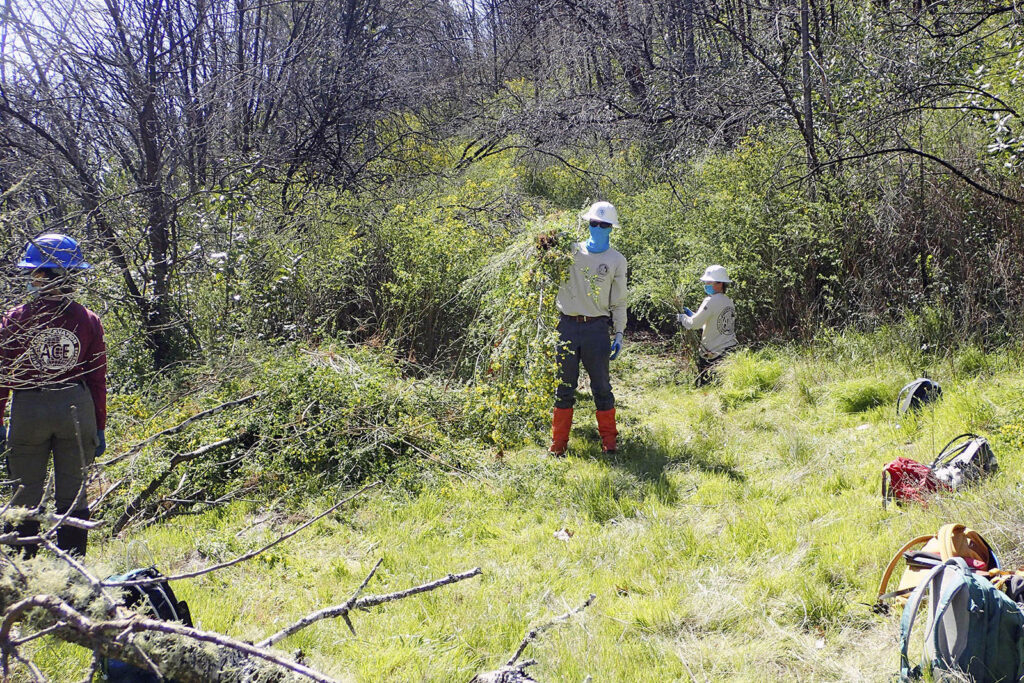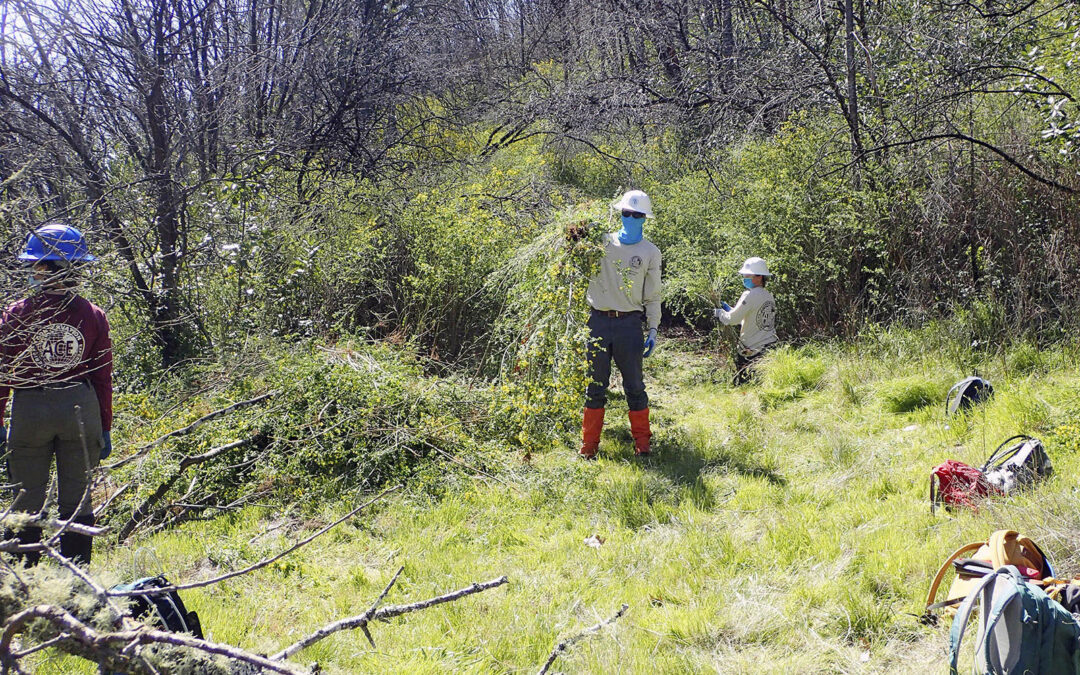Science fiction movies with aliens that invade and reproduce rapidly, even after a fire seems to wipe them out, might seem to the everyday fan of the genre as too obvious a story line.
However, when you compare that plotline to the lifecycle of French broom, this plant’s life imitates art, supplying the Land Trust of Napa County with an ongoing stewardship battle on their protected lands.
French broom is a non-native plant species that was introduced from Europe in the mid-1800’s for local gardens and then spread across Napa County. It is the most widespread of four nonnative invasive broom species that occur in North America, including Scotch broom (Cytisus scoparius), Portuguese broom (C. striatus), and Spanish broom (Spartium junceum).
French Broom’s green stems and small yellow flowers look innocent enough. At the time it was introduced, little did anyone know that it would soon escape the gardens and aggressively crowd out native plants, while also increasing fire hazards. French broom, which often grows in dense patches, burns readily and provides ladders fuels that can carry fire to the forest canopy layer. Because of this, it can increase both the frequency and severity of fires in invaded areas.
With the recent wildfires in Napa County, you might think that at least some of the French broom had been eliminated, allowing native plants a better chance going forward.
But like the plot from the obvious sci-fi movie, French broom uses this to its advantage, growing back even more aggressively thanks to a newly stimulated seed bank that can lie dormant for up to 30 years.
“The term I would use for French broom – and this is just me and not a formally recognized term – is post-fire opportunist,” said local botanist Jake Ruygt. “It takes advantage of the cleared habitat.”
A medium-sized shrub of French Broom can produce over 8,000 seeds a year. A large number of dormant French broom seeds in the soil seed bank can lead to very high germination rates following any type of soil or vegetation disturbance, such as a wildfire. In fact, fire often stimulates French broom seed germination.
With light sabers, infinity stones and time travel not yet possible in the Land Trust’s fight against French broom, the work ends up being as basic as it gets. Pull them out. Mostly by hand. Sometimes with a weed wrench. As a perennial, French broom will also grow back from the root crown, unless the taproot is removed. A weed wrench can be used to remove plants and roots, ideally before the seed has been produced.
Last year, American Conservation Experience (ACE) volunteers paid a visit to a Land Trust preserve where they spent three days pulling up and removing French broom in an area that sprouted up after the 2017 fires. ACE is a non-profit that lends a hand to groups who may need help with their conservation work, and provides young people with a chance to work outdoors, whether restoring trails, surveying wildlife, or in this case, removing invasive plants with the Land Trust.
“Removal of invasives is an important part of conservation work, as these invasive species can upset the balance of local ecosystems,” said ACE crew leader Ashley Bouchahine.
“Additionally, because of its height and woodiness, French broom poses a significant fire risk as it grows tall enough to bridge the gap between low brush and the tree canopy,” said Bouchahine.
Thanks to the hard work of multiple ACE crews over several years across a number of the Land Trust’s protected properties, and the dedication of many outstanding Land Trust volunteers, large swaths of French broom have met their demise.
And while not a Hollywood ending, this is a happy one. For now.

American Conservation Experience volunteers spent multiple days on a Land Trust preserve removing invasive French broom that sprouted after a wildfire. Photo by Megan Lilla – Land Trust of Napa County.

